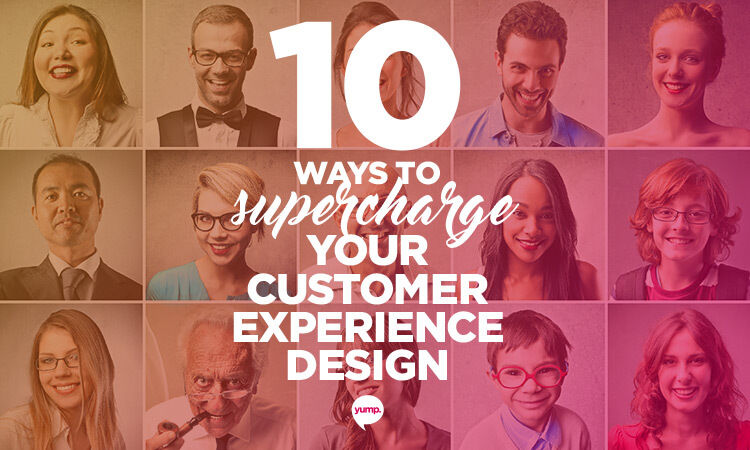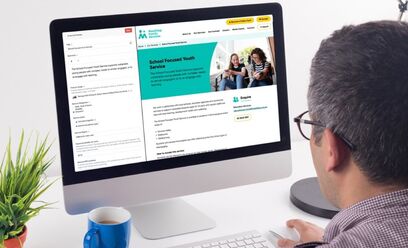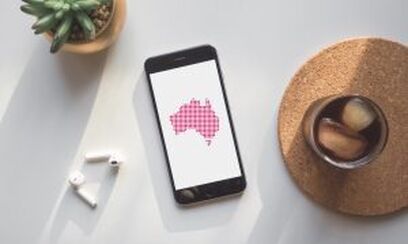Over the course of 4 days of workshops and main conference presentations, UX Australia gathered user experience researchers, designers and practitioners from all over the world, be them established or emerging, to share, network and learn from one another. The Yump team attended this year’s main conference not only to listen to talks, take plenty of notes and meet new people, but also to present with the Thankyou team about our work and collaboration on redeveloping Thankyou’s Track Your Impact web app and customer journey.
In an ever-changing landscape of one digital disruption after another, companies and organisations are looking for new ways to understand their target markets and engage them better. Increasingly they invest in user experience (UX) and customer experience design (CX) capabilities by working with a specialist UX agency or developing their own UX lab. Some UX practitioners are touting leaner and faster ways of developing customer-centric products and services, via methodologies such as guerilla research, rapid prototyping and Agile UX. Others seek innovation and fulfilment by spending more time in research, being more inclusive, and designing for social goods.
Experience is more than just an interface. It is a relationship, as well as a series of touch points between your brand and your customer. Here are our top 10 highlights and takeaways to help you transform your customer experience design:

“None of us is as smart as all of us. Keeping your ideas to yourself is detrimental. Diversity of people equals diversity of ideas.” - Denise Jacobs
There currently exists a myth of the ‘lone creative.’ This is entirely untrue! Only through working together can we hope to solve problems and make valuable change. Many blocks can affect the creative project whether they be red tape or fear of being criticised or judged. Teams can work through those creative blocks together through sharing, actively listening, encouraging each other and discussing new ideas. We can work effectively together in the following ways:
- A client-agency relationship is symbiotic. Work alongside your appointed agency so that they play a vital role in your vision and help you achieve your company or organisational objectives and KPIs.
- There is no such thing as a stupid idea! Discuss all possibilities to achieve the best outcome.
- Invest in discovery workshops and stakeholder meetings with your suppliers and staff so that all parties learn about your culture, listen to ideas and collaborate as one team.

“Products are people.” - Ash Donaldson
We are in the age of the experience economy, where our thoughts and behaviour are driven strongly by how we feel. Samsung washing machines are adored for the Schubert melody that plays every time the washing is complete. Xero accounting software had a vision to make accounting sexy and fun, two words we don’t normally associate with the accounting profession. The Google self-driving car has an innocent and apologetic face so that other road drivers are more courteous and understanding of its limitations. Modern technology succeeds when products are designed for emotional engagement rather than just performing a functional purpose. This philosophy to design applies to any customer-facing digital interface. Just because it’s technologically advanced doesn’t mean it should lack personality. You can:
- Improve your website content by instilling an engaging tone of voice. Avoid writing long, dry content full of technical jargons.
- Make digital interactions fun by introducing subtle animations or transitions that fit the brand’s personality.
- Rewrite robotic system messages and help instructions to be clear, precise, friendly and perhaps even with a dose of appropriate humour.
“Design for context, not devices.” - Derek Featherstone
We are obsessed with designing for devices. Our interface designs and presentation of content are presented as mobile designs vs desktop designs. Designers often make the mistake of drawing assumptions about the user’s context simply from the device they are using. A user viewing a site on a mobile device doesn’t always equate to a user who is in a hurry. This user could be sitting on a train travelling with many hours of leisurely time. This is because device is only one factor in deciding a user context. Context is defined by many other factors such as time, location, proximity, state of mind, capabilities, activity and interests. To design better for context, and thus create a more relevant experience for your users, you can:
- Display a phone number during office hours, and a contact form after hours.
- Reprioritise information about an event, such as logistics, schedule and photos based on whether it is leading up to the event (logistics), during the event (schedule) or after the event (photos).
- Present different help information about getting to one place, from car rentals to walking instructions, depending on how far the user is located away from the destination.
“A form can be long if it matches participant expectations.” - Louise Bassett and Jessica Enders
Louise and Jessica from Neighbourhood Justice Centre (NJC), an organisation who offer a range of services to people who are socially disadvantaged, conducted an investigation into one particular form. This form was an Intervention Order Application, previously only available by paper. They set about to test the language and effectiveness of a new online form for intervention orders. Using a variety of methods for procurement of participants such as social media, marketing materials and utilising local partnerships, the team uncovered surprising findings. Participants did not mind the length of the form, as the steps of the process were clearly highlighted, and participants felt valued and empowered in their ability to help NJC make changes. You can uncover user insights by:
- Using a variety of methods to procure the most suitable user research participants.
- Implementing the above knowledge during user testing to investigate whether the type of language used in a form matches user needs, whether form length matches expectations and whether the form is understandable to all target audiences.
- Implementing the WCAG guide for accessibility to make sure all users can complete a form regardless of any disability.
- Empowering research participants to feel valued and important to the user research process to drive accurate results.

“Innovate like a UX researcher.” - Dan Szuc
A successful innovator possesses 5 traits - questioning, observing, networking, experimenting, and associational thinking, all things that UX researchers have to excel in their roles. How can you apply these 5 traits to enhancing your customer experience?
- Questioning - Just because something has been done the same way for 10 years doesn’t mean it’s the best way to do it. Constantly challenge the status quote in every part of your current customer experience to find new possibilities.
- Observing - Observe your customer behaviour and detect small details in the activities of your customers, suppliers and partners that suggest new ways of doing things.
- Networking - Get to know a diverse range of your customers, not just your pre-determined target market, to gain radically different perspectives from individuals in order to find new opportunities to innovate.
- Experimenting - Constantly try out new experiences, take things apart and test new ideas. Failing fast and failing often will result in faster innovation and the ability to find a better solution quicker.
- Associational thinking - Triggered by questioning, observing, networking and experimenting, you can draw connections between questions, problems or ideas from unrelated fields, which form the catalyst for creativity. Draw conclusions from connecting customer problems with insights, and as a result, create new customer experience design solutions.
“Don’t be afraid to ask people what they are doing.” - Chris O’Brien
Often, organisations make assumptions about what their customers want and need based on their perceived actions rather than directly consulting with them. It is always worth taking the time to investigate, whether that is through analytics or observing behaviours in their true environment or context. During the service redesign process of the State Library of Victoria, Chris and his team spent countless hours observing the public from the opening to closing hours and how they interacted with services and touch points throughout the library. During this process they uncovered many interesting details, such as people sitting on the floor in a cold hallway so they could get wifi without having to put their bags in a locker (usually instructed by security); people sleeping in library nooks and; people just using the library as an escape from the unpredictable weather. This gave them an insight into how people used the services and space, something they would have never uncovered through data.
You can improve your understanding of how your customers behave by:
- Conducting in-depth interviews with customers to find out where their pain points lie.
- Spend time observing your customers in the real world.
- Analysing and implementing the findings, resulting in a more meaningful customer experience design and ensuring you build brand rapport with your customers.
- Working with a consultant or UX agency that is an expert at all of the above.

“Design for MAGIC. Make magic moments.” - Laura Naylor, Cliff Curry and Will Bates
The power of narrative is one of the most powerful tools to selling your brand. A story can enable a brand to communicate the vision, the big picture and the tone. One way to communicate this is through video. A common misconception with video is that it has to be of high production value, which ultimately means high cost! This isn’t true. Using 4 simple storytelling methods, you can simplify the process:
- Start with a classic story arc.
- Make the product the hero.
- Keep your shoot in mind.
- Be inventive but keep it simple.
Whether it’s through video or whether it’s just through the creation of a website or product, you can engage your audience through the power of storytelling.
- Communicate the who, what, where, when and most importantly WHY of your brand using the important methods of storytelling and meaningful UX design.
- Communicate your vision to your audience using powerful triggers.
- Use emotionally engaging icons, images, video and animation to communicate with your audience.

“Answer human needs in a brand-proprietary way.” - Andrew Wight
Does your product or service look like a competitor’s if we simply change the branding on it? If your answer is yes, then perhaps your product or service does not answer your customer’s needs in a way that is proprietary or unique to your brand. To do this well, we need to move beyond best practice references. Best practice is a great starting point but often a mediocre end game. Customer experience is not merely an interaction between a user and a system through an interface. It is in fact a relationship between a persona and a brand through a range of touchpoints, in the context of a story. You can:
- Articulate your brand story via identifying your brand archetype and purpose.
- Define your brand’s role in your customer’s story, where your customer is the hero, you are the mentor and your product or service is the gift.
- Translate the story into customer touchpoints.
“Making sure you're measuring the right metrics is important.” - Andrea Browne and Gillian Vogl
Recognising that their constituents were in dire need of a mental health service for young people, ReachOut designed ‘NextStep,’ a digital tool to guide young people aged 18-25 to the best support for them and empower them to seek help when it comes to their mental health. Setting up 5 UX goals at the beginning of the project provided the framework for measurable outcomes. These were: validating feelings; normalising feelings; an easy-to-understand walk-through process; creating a sense of hope and; the app being easy to connect with. One of the goals was reached by a user simply opening the app. This metric assessment was based on the context of the problem. Given that mental health has such a high barrier to access, this seemingly small measurable outcome was therefore a big win. You can:
- Understand the goals of your organisation prior to the development of an app or website.
- Help your company or organisation understand and set up reasonable metrics, understanding context and environment of line of enquiry.
- Implement solutions based on meaningful findings and then measure the outcomes.
Designing for life-changing impact: From bottled water to ending world poverty from Yuan Wang:
“Building trust with your customers leads to brand loyalty.” - Wesley Rodricks and Yuan Wang
Track Your Impact is a web app from Thankyou that connects their customers and the products they buy, to the projects that Thankyou funds in developing nations all over the world and the impact they have on the people in those communities. With the saying “our word is our bond” guiding Thankyou’s creative and impact teams, it is important that they must prove their impact in order to build trust with their customers. Tracking a product is a vital step in the customer journey that takes them from a “product buyer” to a “movement builder”. Although Track Your Impact sounded like a great concept, product tracks and user sign-up rates were declining, as customers were unfamiliar with the action of tracking a product, and many of them were not motivated enough to use Track Your Impact. Yump, a digital agency in Melbourne, helped Thankyou transform Track Your Impact's customer experience design and achieve an unprecedented level of monthly tracks and user registrations, by applying 4 persuasive design techniques:
- Triggers - What is an effective cue for your customers to take action without being annoying? Increasing the frequency of this cue may increase a desired behaviour if it’s relevant to their needs.
- Simplicity - Is it easy for your customers to take the desired action? Are they limited by time, money or effort? Making this simple for them may induce more actions.
- Motivation - What is motivating your customers? What pain points are you solving for them? It is often easy for businesses to assume their customers’ motivations without truly understanding their problems, hopes and fears.
- Rewards - How are you rewarding your customers after they’ve taken the desired action? Is the reward worth the effort and will they do it again? Building the right rewards will set the scene for repeat customers.
You can read about Yump’s case study on Thankyou here.
If building trust with your customers leads to brand loyalty, building trust with your suppliers, contractors and agencies will lead to co-creation rather than just service delivery. We create better together!








